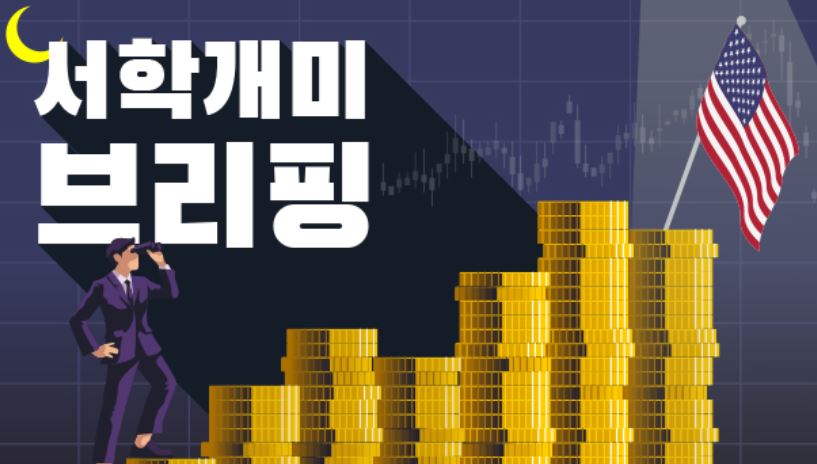CS is also ‘swayed’ by SVB ‘firestorm’…Rumors of a bank crisis on fire

Financial market instability caused by the bankruptcy of Silicon Valley Bank (SVB) seems to be gradually spreading to rumors of a global banking system crisis. Along with rumors of the bankruptcy of First Republic Bank, called the second SVB, concerns have been raised that Credit Suisse (CS), one of the leading global investment banks, may collapse.
First Republic Bank decided to receive funding from a large U.S. bank and CS, the Swiss National Bank (SNB), put out the urgent fire for now, but anxiety persists in that it is only a short-term prescription. As CS has a tremendous influence on financial markets and economies around the world, the market is paying keen attention to future changes in the situation.
As concerns over the spread of bank risks escalated, the U.S. Federal Reserve’s (Fed) big-step outlook for raising its key interest rate by 0.5 percentage points at a time fell below the surface. The market believes that the Fed is likely to raise or freeze its key interest rate by 0.25 percentage points at the Federal Open Market Committee (FOMC) scheduled for next week.
The aftermath of SVB’s bankruptcy, which has Silicon Valley tech companies as its main customers, is hitting financial markets around the world. Following SVB, New York Signature Bank was closed, and First Republic Bank, a San Francisco-based local small and medium-sized bank, was embroiled in rumors of a crisis as depositors surprised by SVB bankruptcy withdrew a large number of deposits.
As anxiety over the U.S. banking system grew, 11 major banks, including JPMorgan Chase, Citigroup, Bank of America (BoA), and Wells Fargo, said in a joint statement that they will support First Republic banks by depositing $30 billion.
Prior to the banks’ statement, U.S. Treasury Secretary Janet Yellen discussed injecting private capital into First Republic Bank with JPMorgan Chairman Jamie Dimon, dubbed the “Wall Street Emperor,” and Dimon reportedly persuaded other banks to join the plan.
However, anxiety expanded again as First Republic Bank announced that it would stop dividends. It was pointed out that large banks’ decision to inject private capital also proves the risk of transferring risks to the financial system. As a result, the stock price of First Republic Bank plunged more than 30% on the 17th (local time), and the stock price of major banks also fell.
The bigger problem is CS, one of the world’s top nine IBs and one of 30 “Banks Important to the Global System” (G-SIB) selected by the Financial Stability Board (FSB). In an annual report released on the 14th, CS said, “We found a significant weakness in last year’s accounting internal control,” adding, “The outflow of customer funds continues.”
Shocked by SVB’s bankruptcy, the market is concerned about the CS crisis, which has incomparable influence with local small and medium-sized banks such as SVB. Saudi National Bank, CS’s largest shareholder, said it would not provide additional funding, sparking such anxiety.
Concerned about the crisis spreading out of control, the SNB and the Swiss Financial Supervisory Service (FINMA) said in a joint statement that “CS has met the strict capital and liquidity requirements imposed on major banks in the wide financial system,” and issued liquidity measures through loans of 50 billion Swiss francs. The Swiss financial authorities’ quick response avoided chaos in the financial market, but the fire still remains. There are also many negative reviews that it is “pouring water into the bottomless pit.”
Kim Young-hwan, a researcher at NH Investment & Securities, said, “The U.S. and Swiss governments’ response to bank risks significantly faster than in the past means that individual bank risks are less likely to spread to system risks.”
The possibility of the Fed’s big step, which had been raised by some earlier suggestions by Fed Chairman Jerome Powell to strengthen the intensity of tightening, has virtually disappeared. In addition to the spread of the banking crisis, the U.S. Producer Price Index (PPI) fell in February from the previous month, breaking most experts’ expectations, weakening the cause of the big step. There is a possibility of a rate freeze before the banking crisis.
According to the Chicago Mercantile Exchange (CME) FedWatch, as of the 17th, the futures market sees an 80% chance of a 0.25 percentage point increase in interest rates at the FOMC next week and a 20% chance of freezing. It excludes a 0.50 percentage point increase at all.
Global IB Goldman Sachs expected the Fed to freeze interest rates, while Japan’s Nomura Securities even suggested a 0.25 percentage point cut.
Along with whether to adjust interest rates, attention is also being paid to what position the Fed will take regarding the banking crisis. The Fed, which controls the global financial market beyond the U.S., has a heavy responsibility for the banking crisis. As expected, a 0.25 percentage point rate hike and a message or specific plan to reduce financial risks can have a positive impact on the stock market.